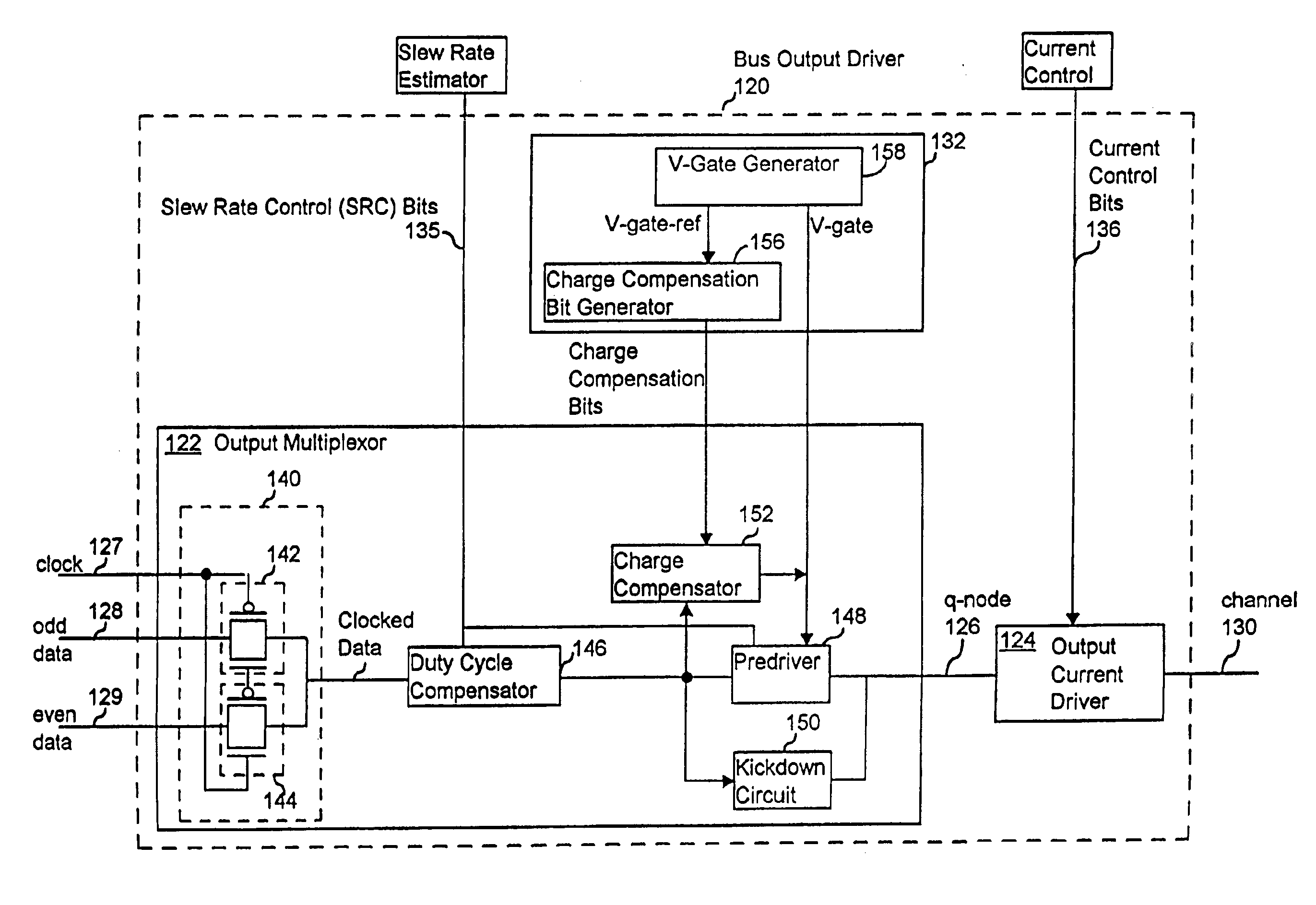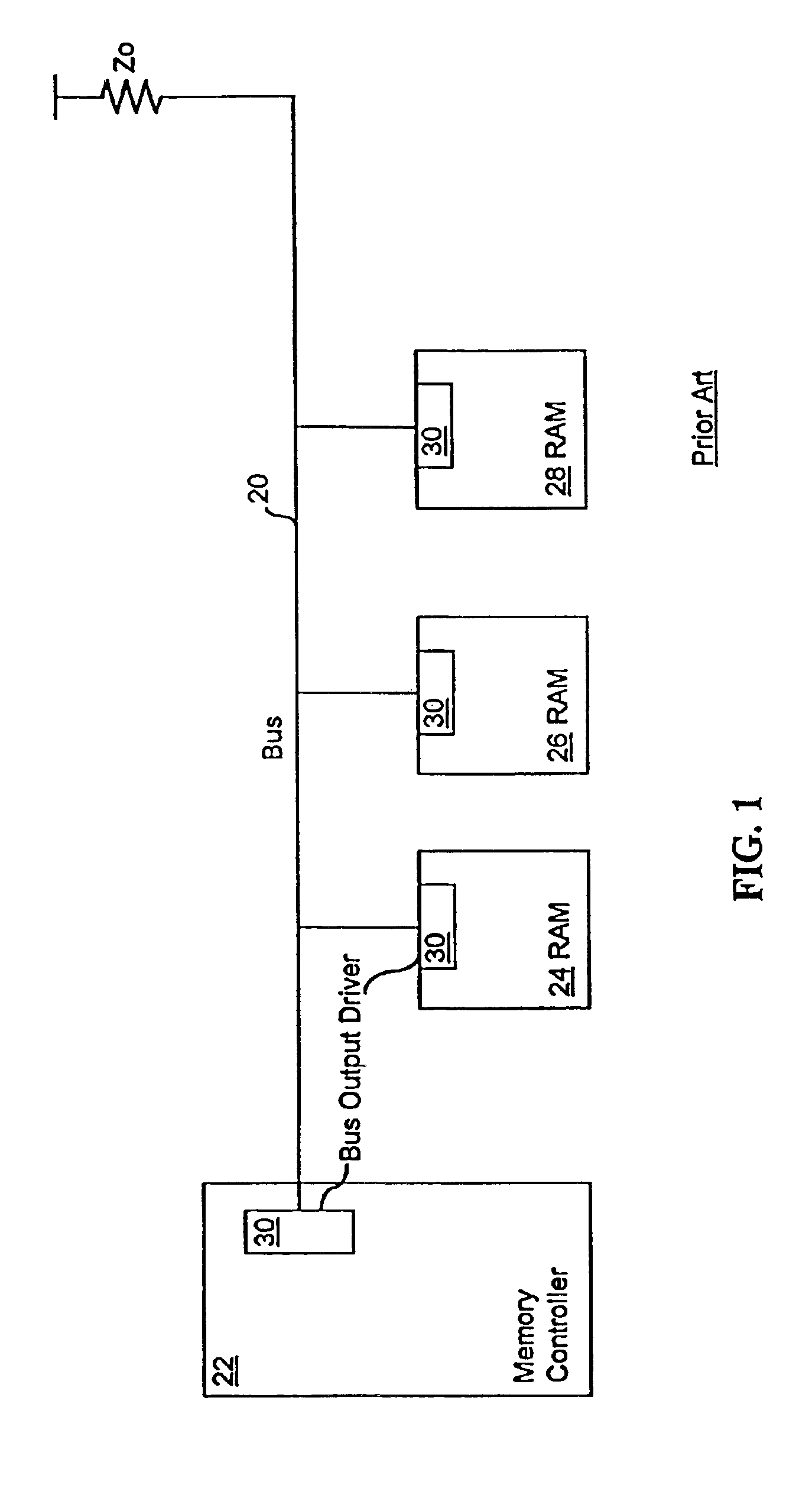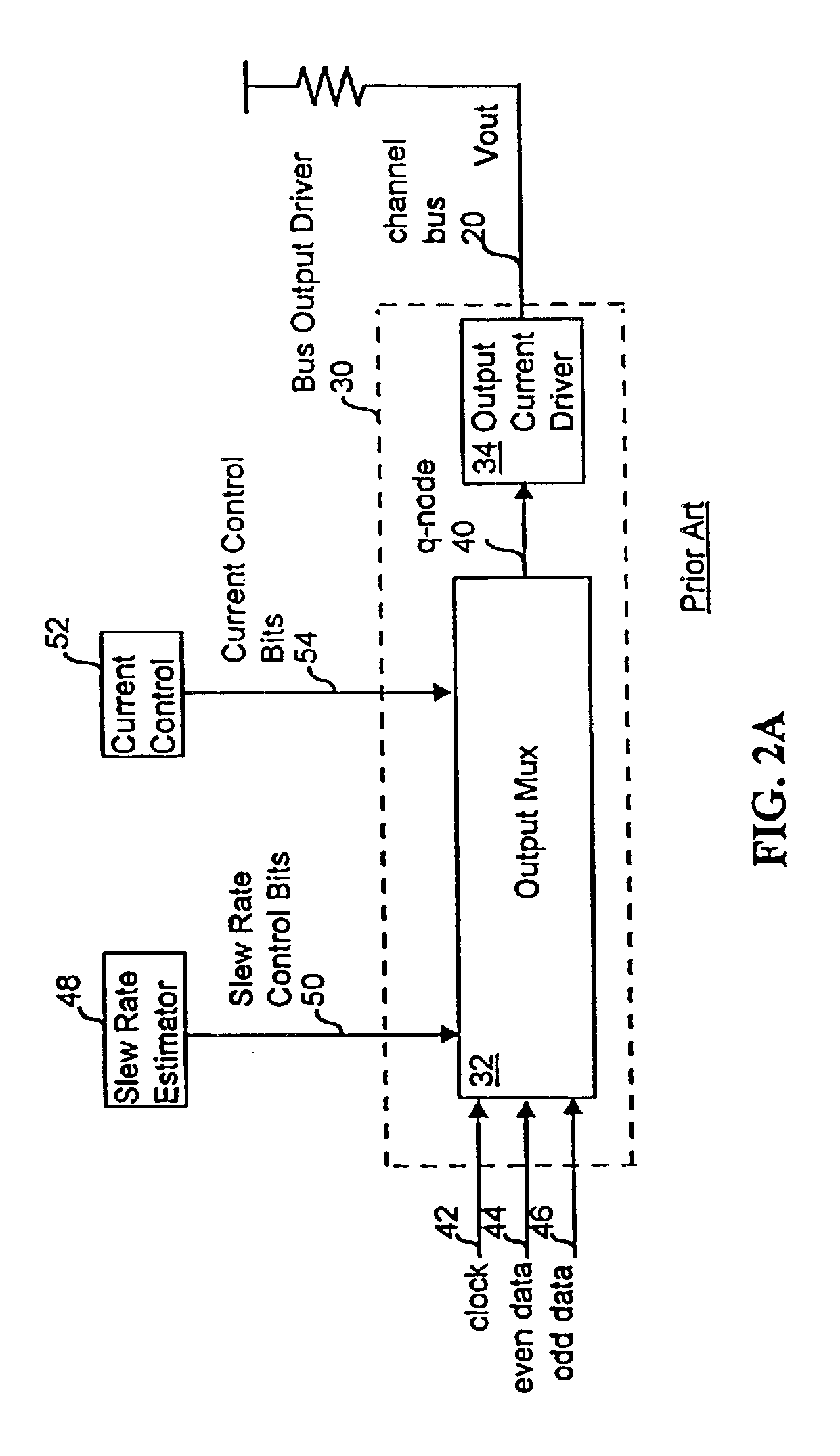Impedance controlled output driver
a technology of impedance control and output driver, which is applied in the direction of pulse manipulation, pulse technique, instruments, etc., can solve the problems of difficulty in matching the delays and slew rates of each q-node under all process, voltage and temperature conditions, and achieve the effect of simplifying the implementation of adjustable operating current, simplifying the design of impedance controlled driver, and controlling switching characteristics
- Summary
- Abstract
- Description
- Claims
- Application Information
AI Technical Summary
Benefits of technology
Problems solved by technology
Method used
Image
Examples
Embodiment Construction
[0050]In FIG. 3, a bus output driver 120 has an output multiplexor 122 that connects to an output current driver 124 at a q-node 126. A clock signal, an even data signal, and an odd data signal are supplied to the output multiplexor 122 at a clock input 127, an even data input 128 and an odd data input 129, respectively. The output multiplexor 122 outputs a q-node signal on the q-node 126 that is used to control the slew rate and output impedance of a channel signal, Vout. In response to the q-node signal, the output current driver 124 outputs the channel signal, Vout, on the channel 130 of the bus. A V-gate supply block 132 supplies control signals and a V-gate voltage to the output multiplexor 122 and will be discussed in detail below. In another embodiment, the V-gate supply block 132 is not used.
[0051]The output multiplexor 122 is responsive to a slew rate control signal, consisting of slew rate control (SRC) bits 135, received from a slew rate estimator, which may be external t...
PUM
 Login to View More
Login to View More Abstract
Description
Claims
Application Information
 Login to View More
Login to View More - R&D
- Intellectual Property
- Life Sciences
- Materials
- Tech Scout
- Unparalleled Data Quality
- Higher Quality Content
- 60% Fewer Hallucinations
Browse by: Latest US Patents, China's latest patents, Technical Efficacy Thesaurus, Application Domain, Technology Topic, Popular Technical Reports.
© 2025 PatSnap. All rights reserved.Legal|Privacy policy|Modern Slavery Act Transparency Statement|Sitemap|About US| Contact US: help@patsnap.com



